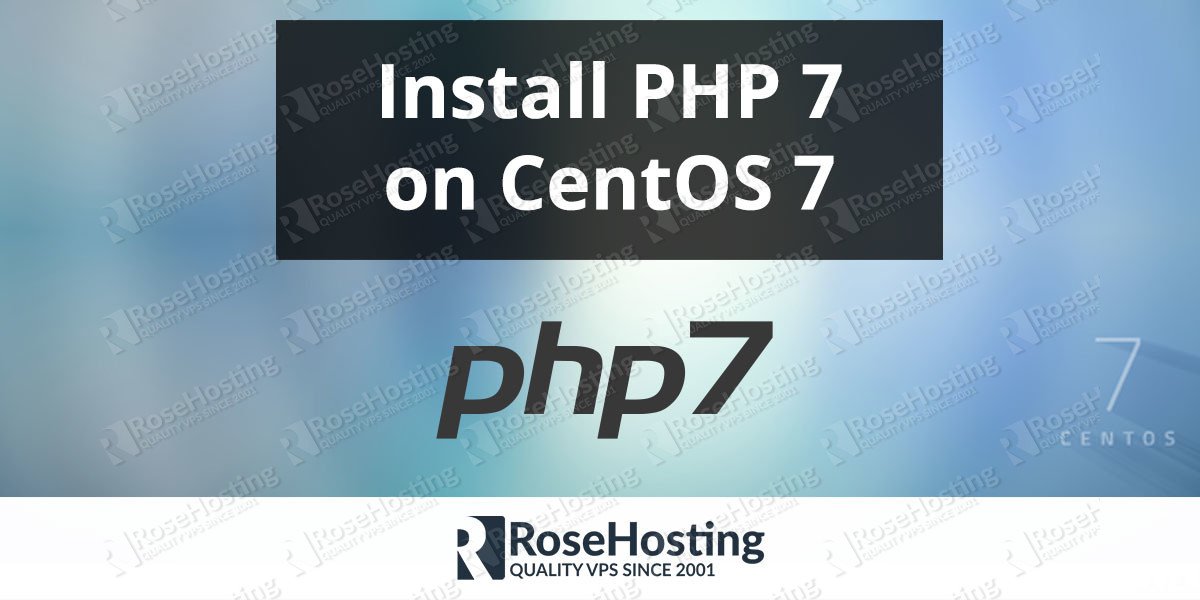We will show you how to install PHP 7 on CentOS 7. PHP is a server-side scripting language used for web development. Recently, the PHP development team announced that the major PHP 7 series has been released and it will become available to the web developers. Installing PHP 7 on CentOS 7 is an easy task, just carefully follow the steps below. Installing PHP 7 on CentOS 7, is fairly easy task if you carefully follow our tutorial below. The Installation of PHP 7 on CentOS 7 should take less then 15 minutes.
PHP 7 comes with numerous new and improved features. One of the most noticeable is the new Zend Engine version. Also, other important improvements are the enhanced performance and significantly reduced memory usage. Thus, PHP 7 can be up to twice as fast as PHP 5.6.
Table of Contents
1. Login via SSH and update the system software
To install PHP 7 on an CentOS VPS, you need to login to your server via SSH. Once you are logged in, update all your system software to the latest version using the command below:
yum update
2. Add the required repositories to yum
Once the update of your system is completed, you can go ahead and add the required repositories to yum.
rpm -Uvh https://dl.fedoraproject.org/pub/epel/epel-release-latest-7.noarch.rpm rpm -Uvh https://mirror.webtatic.com/yum/el7/webtatic-release.rpm
3. Install PHP 7
Now, install PHP 7 using the following command:
yum install php70w
4. Verify the PHP 7 installation
The installation should take a few moments. Once it is completed, you can ensure that the latest stable release of PHP 7 is installed on your system by using the command:
php -v
You should see something like this:
PHP 7.0.0 (cli) (built: Dec 2 2015 20:42:32) ( NTS ) Copyright (c) 1997-2015 The PHP Group Zend Engine v3.0.0, Copyright (c) 1998-2015 Zend Technologies
5. Search all available PHP 7 modules
If you like to search all the available PHP 7 modules you can use to command:
yum search php70w
6. Install specific PHP 7 module
To install specific PHP 7 modules like the module that allows PHP applications to use MySQL databases, you can use the command below:
yum install php70w-mysql
7. Test PHP 7 functionality
To test the functionality of PHP 7 on your CentOS VPS you can create a simple PHP info file and place it in your web server’s document root. Navigate to your web server’s document root:
cd /var/www/html/
Create a PHP info file using nano:
nano info.php
Paste the following content into that file:
<?php phpinfo(); ?>
Save the file and close it. Also, change the ownership of the file and make Apache the owner of that file:
chown apache: info.php
8. Restart Apache Server
Do not forget to restart your Apache web server if you haven’t restarted it yet so the installation changes can take effect:
systemctl restart httpd
The last thing is to access the file using a web browser. Open your favorite web browser and navigate to the following address:
http://111.111.111.111/info.php
Of course, we are using the IP address 111.111.111.111 for testing purposes only, so you should make sure that you are using your actual server’s IP address. You should see a page with the current PHP information such as version, compilation options, extensions, loaded configuration files, etc.
Of course, you don’t have to install PHP 7 on CentOS 7, if you use one of our PHP hosting services, in which case you can simply ask our expert Linux admins to install PHP 7 on CentOS 7 for you. They are available 24×7 and will take care of your request immediately. You can also consider reading how to install PHP 7.2 on CentOS 7 or how to install PHP 7.3 on CentOS 7.
PS. If you liked this post, on how to install PHP 7 on CentOS 7, please share it with your friends on the social networks using the buttons on the left or simply leave a reply below. Thanks.

Thanks for this! Just fresh installed wordpress and I use a theme that requires 7.0 and I couldn’t remember how to install it.